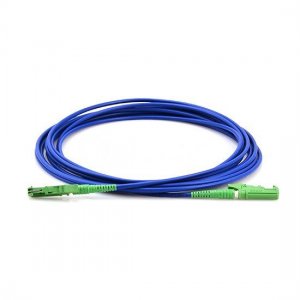
# Armored Fiber Optic Cable: Enhanced Protection for High-Speed Data Transmission
## What is Armored Fiber Optic Cable?
Armored fiber optic cable is a specialized type of fiber optic cable designed with additional protective layers to safeguard the delicate optical fibers inside. Unlike standard fiber optic cables, armored variants incorporate metal or non-metallic armor beneath the outer jacket, providing superior resistance to physical damage, moisture, and environmental hazards.
## Key Features of Armored Fiber Optic Cables
The enhanced protection of armored fiber optic cables comes from several distinctive features:
– Metal or non-metallic armor layer (typically steel or aluminum)
– Corrosion-resistant materials
– Crush resistance
– Rodent protection
– Moisture barrier
– Increased tensile strength
## Types of Armored Fiber Optic Cables
### Interlocking Armored Cable
This type features a helical metal armor that provides flexibility while maintaining excellent protection. The interlocking design allows the cable to bend without compromising the armor’s integrity.
### Corrugated Armored Cable
With a corrugated metal tape armor, this variant offers superior crush resistance and is commonly used in direct burial applications where the cable may face significant mechanical stress.
Keyword: armored fiber optic cable
### Non-Metallic Armored Cable
For environments requiring non-conductive materials or where electromagnetic interference is a concern, non-metallic armored cables use materials like Kevlar or fiberglass for protection.
## Benefits of Using Armored Fiber Optic Cables
The additional protection in armored fiber optic cables translates to several operational advantages:
– Enhanced durability in harsh environments
– Reduced risk of damage during installation
– Longer service life compared to standard cables
– Lower maintenance requirements
– Improved reliability for critical applications
– Resistance to rodent bites and other animal damage
## Common Applications
Armored fiber optic cables find use in numerous demanding environments:
– Industrial settings with heavy machinery
– Underground installations (direct burial)
– Outdoor aerial deployments
– Military and defense applications
– Oil and gas facilities
– Mining operations
– Harsh weather environments
## Installation Considerations
While armored fiber optic cables offer superior protection, they require special installation techniques:
– Proper grounding for metallic armored cables
– Specialized tools for termination
– Careful handling to avoid kinking
– Appropriate bending radius maintenance
– Proper strain relief at connection points
## Future Trends in Armored Fiber Technology
The armored fiber optic cable market continues to evolve with:
– Development of lighter yet stronger armor materials
– Integration with smart monitoring systems
– Improved flexibility for easier installation
– Enhanced environmental resistance
– Cost reduction through manufacturing innovations
As data transmission demands grow and networks expand into more challenging environments, armored fiber optic cables will continue to play a critical role in maintaining reliable, high-speed communication infrastructure.